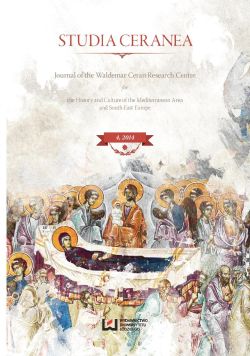Плач Адама и «адамический текст» в древнеславянской рукописной традиции
Adam’s lament and “Adamic text” in Old Slavonic handwriting tradition
Author(s): Milena V. RozhdestvenskajaSubject(s): Russian Literature
Published by: Wydawnictwo Uniwersytetu Łódzkiego
Keywords: Old Church Slavonic literature; Byzantine and Slavonic apocrypha; Medieval Slavonic apocrypha; erotapocriseis; textology of literary and folk texts
Summary/Abstract: Apocryphal stories of Adam related to the subjects of the Paradise lost, Adam’s repentance and expulsion from Eden, life of Adam and Eve after the expulsion, the manuscript that Adam gave to Satan, the Holy Cross story – all these subjects can be called the single Adamic text. This intertestamental texts includes Story of how many parts Adam was created from, Adam’s Handwriting, Story of the Cross Tree, Story of Adam and Eve, Adam’s Lament. In Old Russian manuscripts these texts were not necessarily clearly divided from one another, they were often copied as a single set related to the first man and woman. Author had like to look in more detail into the lament of Adam. The Old Testament says nothing about the penance and lament of Adam after his and Eve’s expulsion from Eden. However, the apocryphal Old Russian version (Confession of Eve) mentions his crying and lamenting. Another genre of the Adamic text (apart from prayer, narration, and lament) is the question-and-answer erotapocritical apocryphal literature in the form of riddles and solutions. For example, in the wellknown apocryphal ‘Talk of three Holy Hierarchs’, the text known in different versions to the southern Slavs since the 12th century, which has a long literary tradition in Russia well into the 19th century, there are riddles concerning Adam. The theme of Adam in Old Russian literary and oral traditions is present in several genres: narrative, spiritual verse, riddles.
- Issue Year: 2014
- Issue No: 4
- Page Range: 161-170
- Page Count: 10
- Language: Russian

